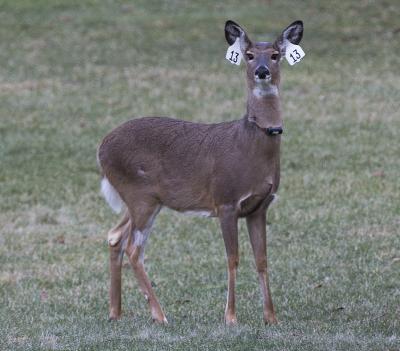Deer Sterilization Part II Called Off

The second phase of the East Hampton Village government's effort to reduce the deer population through sterilization of does has been postponed. Village officials will reevaluate the program, in which it claimed that 114 does were sterilized over 12 nights last month, after the summer.
Rebecca Molinaro, the village administrator, cited weather conditions as the reason for abandoning the second phase, which was to be conducted this month by White Buffalo, a nonprofit organization based in Connecticut. Nonetheless, the village, she wrote in an email, "has committed to a multiyear sterilization program."
The village board voted on Friday to amend its budget to increase revenue and appropriations toward the sterilization effort. The vote came after the Village Preservation Society of East Hampton, which had pledged $100,000 to the program, made the donation. The donation supplemented the $30,000 appropriated by the village board for the sterilization effort.
Kathleen Cunningham, executive director of the Village Preservation Society, acknowledged weather-related challenges to implementation of the program. "The data is not in yet," she said on Friday, prior to the village's announcement. "Generally speaking, it's not in the first year of the program that you notice the change. We know we sterilized so many deer, consequently there won't be as many next year."
While animal rights activists felt the sterilization program more humane than an organized cull, some were nonetheless critical of a procedure they called cruel and ineffective. Several tagged does were found dead, at least one with a gunshot wound.
"I think they made the right decision not to continue with the program in this weather," said Dr. James Meyer, a large-animal veterinarian in East Hampton. Combined with this winter's extreme cold, the stress of capture could result in kidney and heart damage, he said. "My concern would be operating on animals and releasing them at night, in very cold, extreme conditions, and letting them fend for themselves without a follow-up," he said.
